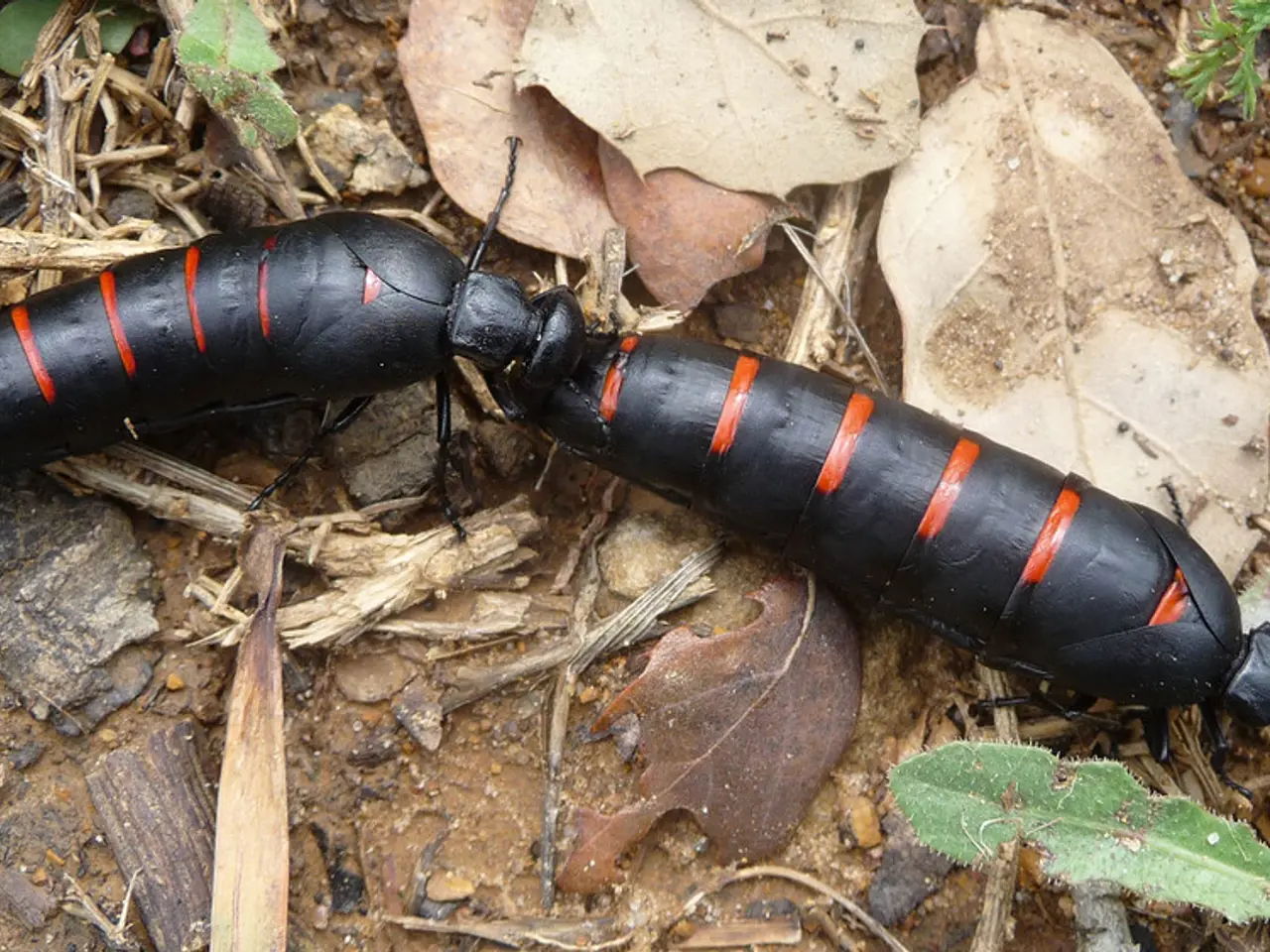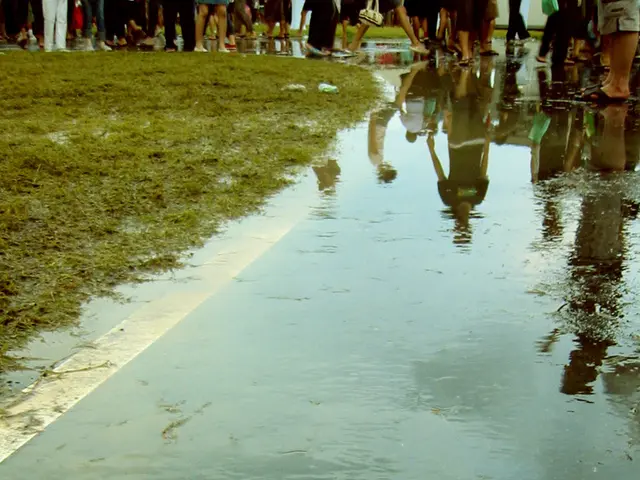Bees and Weather: Does Stress Lead to Sunburn in Bees?
In the ever-changing world of nature, small creatures like ants, bees, birds, butterflies, moles, snails, and ticks have developed unique survival strategies to cope with various weather conditions, such as rain and heat.
Mosquito larvae typically develop in stagnant water, but adult mosquitoes seek shelter in dense vegetation or shaded, humid areas during rain and extreme heat to avoid desiccation and heavy rain impact. Mosquitoes, known for their resilience, can even survive light rain and raindrops, but protection against them remains important, especially when walking in woods, lying on meadows, or enjoying nature.
Ants, known for their intricate colonies, build underground nests or mounds that protect them from flooding during heavy rain. They also adjust their foraging activity to avoid extreme heat, being more active during cooler parts of the day or night. Ants, however, float on water surfaces but cannot swim, which could potentially pose a threat during heavy rain.
Many birds reduce activity during peak heat by seeking shade, panting to dissipate heat, and increasing water intake. For example, guineafowl limit mid-day exposure and prefer early morning or late afternoon foraging, roosting in trees to avoid predators rather than to stay warm. Garden birds benefit from human-provided water sources during heatwaves to stay hydrated.
Butterflies often shelter under leaves or in crevices during rain and heat, regulating their body temperature by basking in the sun in cooler times and resting during peak heat. Unlike snails, which conserve moisture during heat by sealing their shells with mucus and retreating into shaded, humid microhabitats or buried in soil during dry or hot periods, butterflies do not have such a mechanism. Instead, they fold their wings when resting or trying to hide, but this does not protect them from rain damage.
Living underground, moles are somewhat insulated from surface weather fluctuations. Their burrows provide shelter from rain and heat, but extreme dry conditions may limit their insect prey availability. Moles may experience increased mortality during hot summer and dry times.
Bees reduce foraging in heavy rain and extreme heat. They stay inside the hive during bad weather, using the hive structure to regulate internal temperature and humidity. Bees also cluster to conserve heat during cold or rainy conditions and increase water collection to cool the hive in hot weather. Bees do not get sunburned because their body covering is made of chitin, not skin.
Snails, on the other hand, conserve moisture during heat by sealing their shells with mucus and retreating into shaded, humid microhabitats or buried in soil during dry or hot periods. They often avoid activity during heavy rain to prevent injury or displacement. Naked snails, however, struggle with dryness and heat, and may perish without a cool hiding spot.
Ticks, which can be found in gardens, parks, and other outdoor spaces, are resilient but cannot withstand extreme temperatures (50 degrees Celsius) and dryness. Protection against ticks remains important, especially when walking in woods, lying on meadows, or enjoying nature.
In conclusion, these animals rely on behavioral adaptations such as seeking shelter, adjusting activity timing, and utilizing structural refuges (nests, burrows, colonies) to survive adverse weather conditions. Access to water and microhabitats is crucial for their resilience to heat and rain.
Home-and-garden creatures like ticks are resilient to certain weather conditions, yet protection against them is crucial during rain and extreme heat, especially when engaging in outdoor activities. Similarly, ants have intricate colonies and build underground nests or mounds to deal with heavy rain, while some garden birds benefit from human-provided water sources during heatwaves to maintain their lifestyle.




